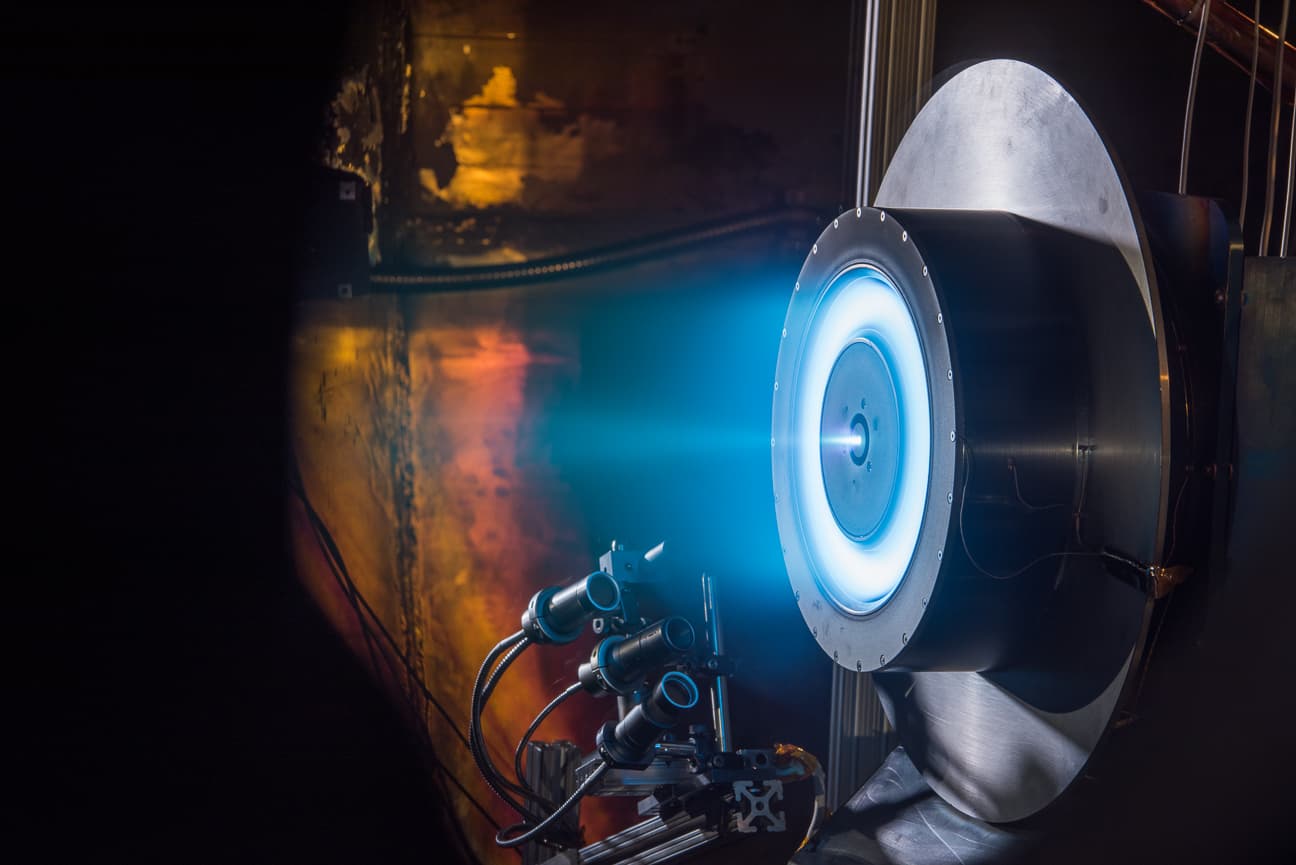Ionic Propulsion from NASA
NASA's new X3 thruster, which is being developed by researchers at the University of Michigan in collaboration with the agency and the US Air Force, has broken records in recent test. It's hoped that the technology could be used to ferry humans to Mars.
The X3 is a type of Hall thruster, a design that uses a stream of ions to propel a spacecraft. Plasma is expelled to generate thrust, producing far greater speeds than are possible with chemical propulsion rockets, according to NASA.
A chemical rocket tops out at around five kilometers per second (1.86 miles/sec), while a Hall thruster can reach speeds of up to 40 kilometers per second (25 miles/sec). This kind of increase is particularly relevant to long-distance space travel, like a prospective voyage to Mars. In fact, project team leaders project that ion propulsion technology such as this could take humans to the Red Planet within the next 20 years.
Ion engines are also more efficient than their chemical-powered counterparts, requiring much less propellant to transport a similar amount of crew and equipment over large distances. Alec Gallimore, the project lead, stated that ionic propulsion can go around ten times farther using a similar amount of fuel in an interview with Space.com.
There are of course many other forms of deep-space travel on the table. The flaw of chemical-based designs is the need to bring the chemical fuel with them into space, which adds more mass that needs more fuel to lift into space, and so on. A Bussard ramjet, which is a type of fusion rocket, collects diffuse hydrogen in space with a huge scoop, which means, since its fuel is picked up en route, that it could approach light speed.
Sci-fi fans would recognize faster-than-light theoretical forms like the warp drive. General relativity stipulates that nothing can travel faster than the speed of light in the universe. However, if we could compact and expand the fabric of spacetime ahead of and behind us, respectively, we could technically be moving faster than the speed of light. However, the scientific consensus so far is that we're nowhere near this kind of technology.
Red Planet, Green Light
Recent tests demonstrated that the X3 thruster can operate at over 100kW of power, generating 5.4 Newtons of thrust — the highest of any ionic plasma thruster to date. It also broke records for maximum power output and operating current.
The technology is apparently on track to take humans to Mars sometime in the next twenty years. However, it's not without its limitations.
Compared to chemical rockets, the ionic alternative is capable of a very small amount of thrust. This means that it would have to operate for a very long time to reach the same level of acceleration as a chemical system, and as a result it's not currently suitable for the launch process.
However, engineers are attempting to mitigate these issues with the X3 design. Multiple channels of plasma are being used rather than just one, but the current challenge is producing an engine that's sufficiently powerful as well as being relatively compact. While most Hall thrusters can be picked up and carried around a lab with relative ease, the X3 needs to be moved with a crane.
In 2018, the team will continue to put the X3 through its paces with a test that will see it run continuously for 100 hours. A shielding system is also being developed that would prevent plasma from damaging the walls of the thruster, allowing it to operate for even longer, perhaps even several years at a time.
Share This Article
